Luis Carrión | Department of Latin American Studies | College of Social & Behavioral Sciences
Mexican Migrants Return South: Transborder Testimonials of Resilience and Adaptation from New Arrival Community in Mexico City
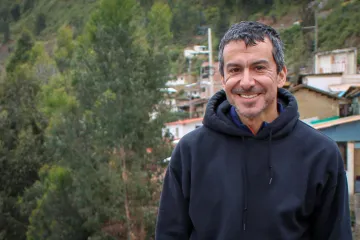
This ethnographic film project focuses on return-migrants living and working in the burgeoning community in downtown Mexico City known as "Little LA." In recent years, 1.5 generation undocumented migrants -those brought across the border as young infants and living in the U.S.- have been forced to cross the border back to Mexico. This trans-border population flow represents the latest stage of a neoliberal migration pattern that complicates our established understanding of the south to north Mexican diaspora. Although they are "Mexican," these fully Americanized trans-border migrants are accustomed to living in the U.S., and they struggle to ground their identity in the sprawling urban landscape of one of the world's largest cities. This film asks the following: How do former "Americans" live after deportation in a country they barely know, and how do they navigate the challenges of forced return migration? How does the collective trauma of deportation lead to community-building and the creation of a unified sense of belonging hundreds of miles from the U.S. Mexico border?
Linda Choi | School of Geography, Development & Environment | College of Social & Behavioral Sciences
Belonging on the Frontier: An Asian American Immigrant Experience on the Borderlands

This project provides an autoethnographic perspective of the Arizona-Sonora borderlands, drawing from personal narratives as well as placing them within the broader context of the historical patterns of Asian immigration in this region. Building on my own personal reflections, this project seeks to more broadly shed light on the untold stories of belonging, cultural identity, place-making, and community formations for the Asian immigrants who have settled along the borderlands. True to autoethnographic methodologies, I will provide a narrative of place-making that is as personal and it is generalizable, thereby providing an analytic view of a hitherto unacknowledged borderlands population.
Gloria Flores | Department of Spanish and Portuguese | College of Humanities
Pendular Borders: A Work on Dance and Female Border-Crossing

Pendular Borders challenges border-crossing dynamics through what I coin as a ‘binational pendulum-like mobility’. Exploring the emotional, physical, and critical relationships that emerge in the US-Mexico border is crucial to understanding the types of kinesthetic resistance this geopolitical space produces. Pendular Borders will reveal through the practice of dance and bodily movement the multiple identities and experiences lived by women who continuously traverse the US-Mexico Border. This project will deliver 1) a dance performance; 2) a collection of visual, performed and written testimonies made available on a website; 3) an article on the community-based methodology developed for Pendular Borders, which will be part of the second chapter of my dissertation. This work portrays the ways in which stories of immigrants are part of the contemporary global history, and serves as an important example of how dance activates change and invites participation across socio-economic, political, racial and cultural backgrounds.
Elizabeth Gaxiola | Department of Teaching, Learning, and Sociocultural Studies | College of Education
Creating Emancipatory Spaces through Arts-Based Activities with Migrants along the U.S.-Mexico Border and Beyond

Migrants, asylum seekers, and refugees encounter profound challenges prior to leaving their home country, during their journeys, and upon arrival at their destination. When traveling through these spaces, they experience fear, uncertainty, despair, confusion, and other emotions. What outlets are they afforded to express these emotions? Would creative expressions, for example, through, poetry, creative writing, testimonios (testimonies/narratives), and pláticas (talks) provide them with opportunities to name and narrate their worlds? Do artistic undertakings create a healthier emotional and mental state for migrants and their loved ones? Can arts-based experiences at least temporarily free individuals from pain or desperation? Although media coverage of the “migrant experience” has been extensive, it has not often included the voices of migrants themselves. These activities and testimonios will be explored in a virtual mode with migrant families awaiting their asylum interview, and who are now safe in their new communities.
Mandy Loader | School of Journalism | College of Social & Behavioral Sciences
Changing the Narrative: The Impact of the Safe Third Country Agreements on Guatemalan Asylum Seekers

This project combines journalistic, historical, and anthropological methods to explore the U.S. presidential administration’s changes to the rules for asylum seekers that were put into effect in November 2019, requiring migrants to apply for asylum in the first safe country through which they travel. Research includes documenting the experiences of recently arrived Guatemalan migrants who are seeking asylum in the United States as they await review of their cases in Mexican border cities through interviews and ethnographic observation. In addition, it seeks to understand migrant experiences during their journey through Mexico and crossing the U.S.-Mexico border. Further, this project will also address actions and potential legislation by organizations on behalf of migrants, taking into account asylum restrictions enacted during the Covid-19 pandemic and federal immigration policy changes during the first months of the new Biden presidency in 2021. It will also provide information about how this policy is affecting those who remain in the U.S.-Mexico borderlands, including its overall impact borderland region.
Mario Macías Ayala | School of Anthropology | College of Social & Behavioral Sciences
Beyond Concrete and Violence: The reconfiguring of local dynamics in Nogales Arizona/Sonora borderlands since the early 2000s

After September 11th, 2001, the United States government set borders and unauthorized migration as central themes to national security. Shortly thereafter, with the start of the war against drugs in 2006 by the Mexican government and the onset of the Great Recession in 2007, the United States strengthened measures to control unauthorized migration, violence at the Mexico-U.S. border and the havoc caused by the recession. Consequences have included the increased budget for the extension of the border wall and border surveillance; further restrictions for border crossing that have fragmented border communities; and the implementation of stricter anti-immigrant rhetoric and laws that criminalize clandestine border crossing and facilitate the removal of unauthorized migrants. This project explores how local dynamics among residents, organizations and authorities have been reconfigured since the beginning of the 2000s in Nogales Sonora/Arizona borderlands. Through interviews with local and non-local organizations and inhabitants, this work explores abrupt and gradual changes in local dynamics continuities and terminations of local and binational projects, the increase in violence in the region, the impact of growing in-transit migration, the initiatives that have arisen, and the participation or not of the local and non-local populations. This work not only informs us on how the reconfigurations in the Nogales Sonora/Arizona have affected the dynamics of the people living and working in the region, but also contributes to conversations about how to support positive responses to the current situation.
Mariel Miranda | School of Art | College of Fine Arts
Everything was Black and Yet, it Glowed

This project proposes to create an interdisciplinary research mechanism based on the activation of dream audios as source material for exploration and interrogation. Through the active listening and transcription of a dream archive, I have discovered the recurrent description of scenes related to family archetypes, border community struggles, gender issues and the persecution of necro-violent monsters. Through the dream archive research I will create a visual and textual lexicon that serves as both a manual and methodological framework for mapping an specific sensible political landscape: A US-Mexico Border region during the period of 2013 to 2020. This lexicon mapping practice aims to address the question of how we can translate our dreams into material forms —texts, imaging, objects, in order to be able to speak and discuss from a personal background about the manifestations of fears and desires that intersect our sensible experience as subjects. The dream archive is based on my life experience as a young woman who has lived her life on the US-Mexico border. Generating knowledge from the female experience of the global south by applying a sensitive and intimate technique is an epistemic decolonial effort.
Diana Peralta | Fred Fox School of Music | College of Fine Arts
Songs of Eagles and Stars

In the present climate, the importance of being involved in border healing has increased. My project uses this as the basis of its purpose: The objective is to record two videos with songs carefully chosen after specific research to clearly identify the characteristic link of the people from this border-zone through time. The videos will bring together musicians from both sides of the border, and the songs will be sung in the two languages (Spanish and English) using the words appropriate for each cultural identity. These videos will be edited so we can see images from both countries and the singers and musicians in their own atmospheres and circumstances.
Carmella Scorcia Pacheco | Department of Spanish and Portuguese | College of Humanities
Cross-border Recovery and Pedagogical Approaches to la indita
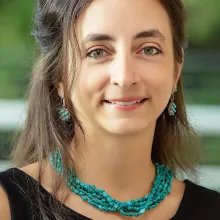
Integral to Fronteridades’ initiatives in its efforts to expand border learning, I plan to incorporate inditas, a song genre that originated in Mexico resembling the corrido, into the Spanish as a Heritage Language (SHL) classroom. This will contribute to an often-omitted history of cross-border popular expressions between Mexico and New Mexico in the nineteenth century. This study bridges interdisciplinary approaches of both archival and Spanish language recovery to expand border learning in the SHL classroom. The study is twofold. One, it works to recover the indita genre from the archives at the Center for Southwest Research at the University of New Mexico (UNM) and the Gutiérrez-Hubbell Collection, both located in Albuquerque. The study will re-historicize the cross-border connections between New Mexico and Mexico through the indita genre and will contribute to borderlands scholarship with the creation of a manuscript for the Journal of Arizona History. Secondly, the study will create a digital story for intermediate heritage language students. This digital story will serve as a model for both recovery efforts during a pandemic and as a model for students to create their own digital story focused on borderlands oral traditions, popular culture and identity in the SHL classroom. I anticipate an outcome of community-driven learning rooted in social justice in which students are able to critically think about their own positionality in Arizona-Sonora cross-border dynamics through oral traditions and popular performances.
Daniela Torres Cirina | Department of Spanish and Portuguese | College of Humanities
Transnational Voices: Multimodal Narratives From The Borderlands
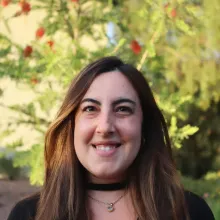
In this project, I will collect, analyze and showcase multimodal narratives of Spanish as Heritage Language students, from Intermediate level courses, that reflect on their multicultural and multilingual identities. One of the aims is to create an open resource in the form of a website with these multimodal narratives. These narratives will be part of course assignments, which until now, have followed a traditional essay style. Instead, for the purpose of this research project, these assignments will be redesigned using a multimodal approach. A multimodal narrative is a way of composing that does not privilege just the linguistic form. Using this approach, students will have the opportunity to express their cultural and linguistic diversities through multiple modes (texts, sounds, visuals, movements and gestures). The multimodal nature of these narratives will have the potential to blossom multilingual ways of creating meaning by students, which sometimes can be difficult to achieve through traditional composing pedagogies. The process of developing their narratives, followed by the recognition they will receive by being displayed to the public, will honor the students’ life experiences, their family ties, their communities and culture.
Barbara Teso | Department of Mexican American Studies | College of Social & Behavioral Sciences
Borderland Feminisms and Marginalized Knowledges Research Project
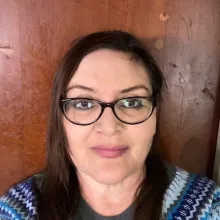
This qualitative study will collect Latina and Indigenous migrant women's testimonios and marginalized knowledges focusing on their migration experiences in the U.S.-Mexico borderlands. Testimonios will be gathered from women at the Kino Border Initiative's soup kitchen and Casa Nazareth Women's Shelter in Nogales, Sonora, Mexico to explore how, when, and why migrant women express their feminisms in contexts of migration and to gain a deeper understanding of their migration-related knowledges. Borderlands feminisms are defined here as those daily acts of expression of female consciousness, empowerment, agency, and opposition by women as they cross and settle into the U.S. Mexico border region and anywhere they come into contact with the dominant society. Marginalized knowledges are those unique ways of knowing of "female brown bodies" that are often devalued and discounted because they are not considered authoritative or objective knowledge. These "saberes" are based on the lived experiences of women of color and embody their diverse ways of knowing and understanding the world. Thematic analysis will be used to map, analyze, and interpret emerging themes and patterns in the testimonio data.
Cindy Trejo | Department of Mexican American Studies | College of Social & Behavioral Sciences
Logro Educativo Testimonios
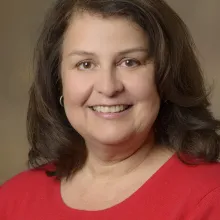
The US / Mexico border location stirs up dominant stereotypes and false narratives of Mexican immigrants and their drain on society. This project highlights six scholars from the border town of San Luis to challenge this false majoritarian message. Using Solórzano & Yosso’s 2001 definition of Counterstories as “a method of telling the stories of those people whose experiences are not often told (p.32),” this project will highlight intimate, thought-provoking individual experiences beginning with their junior high early college program to becoming college graduates. Now, young professionals or graduate students their stories will advance understanding of education as a means of social justice, especially for borderland, first-generation and underrepresented students in higher education. Because images from television, movies, and documentary film, rarely highlight underrepresented minorities as valuable citizens and a foundation of strength to our country (Parker, 2012), this project will create new ways of promoting the cultural wealth and resources that inspire and support academic development. Logro Educativo Testimonios is a creative project that illuminates and honors the voices of scholarly People of Color through storytelling performance.
Bella Varela | School of Art | College of Fine Arts
Becky the Explorer
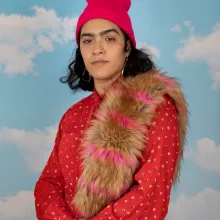
Becky the Explorer addresses my personal experience with American history and popular culture to explore the intersection of immigrant experience, family, and gender identity. The artwork consists of video artworks and textile assemblages that layer my personal experience with American history and popular culture to explore the intersection of immigration, family, and gender identity. The assemblages are constructed from found and custom-printed fleece blankets, and thrifted souvenirs. The blankets will bear images of pop culture icons, homeland heroes, picturesque landscapes, religious figures, and sports stars that I collect and use as reference material for my custom fleece prints. Similarly, the videos are edited into a montage of Point-of-View (POV), landscapes, and performance sequences. By deconstructing and reconfiguring those materials I create formal, physical and conceptual gaps where new meanings are inferred and interpreted.

